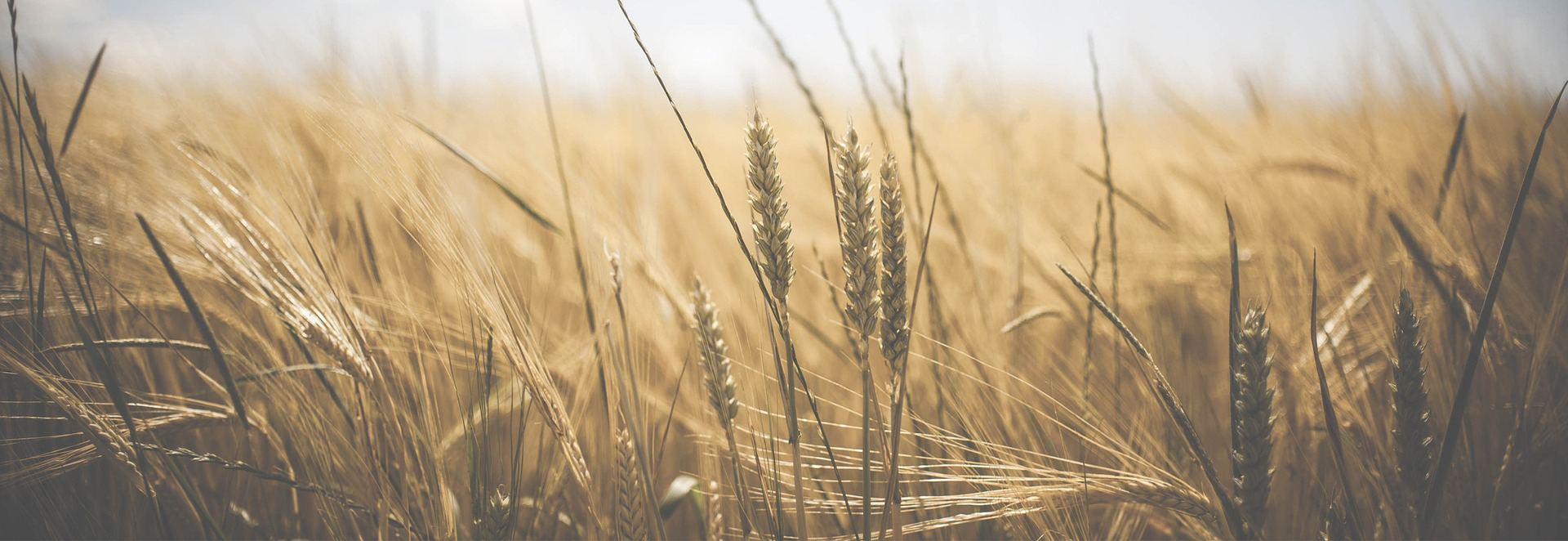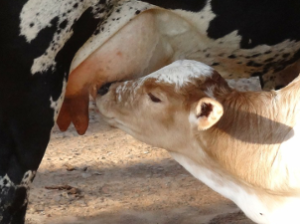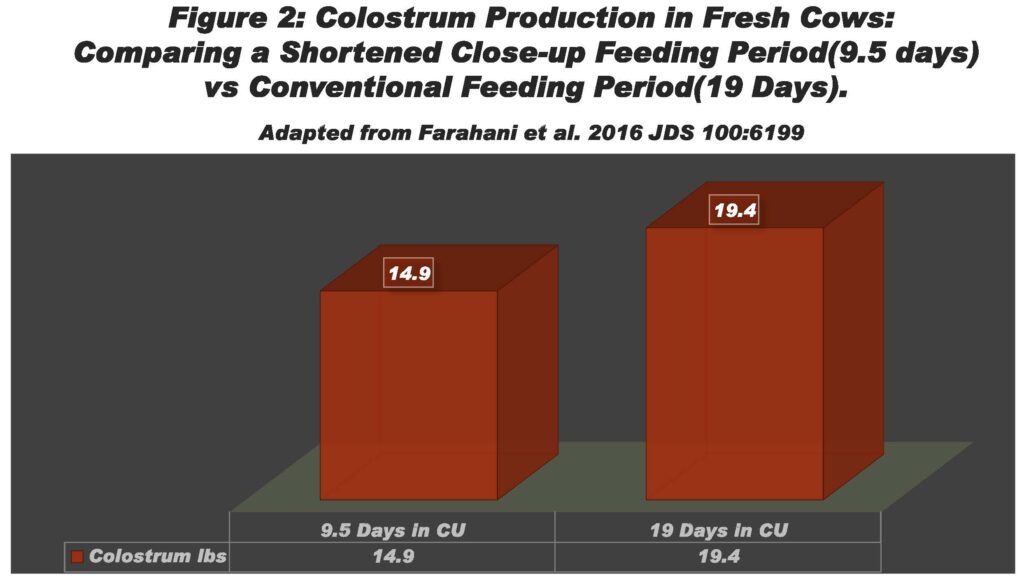

By Dr. Dan Schauff, Ph.D., P.A.S.
Supplying newborn calves with adequate quantity and quality of colostrum can greatly impact future health, growth and milk production of heifer calves.
However, colostrum production and quality can vary considerably between cows and seasons of the year.
Occasionally, our Nutrition Department will get queries concerning why cows have significantly decreased their colostrum production. The answer can be complicated and not always readily apparent.
This is because there appear to be numerous factors both known and unknown that can be the underlying cause(s) for low colostrum production.
Research on the cause(s) of low colostrum production is limited, however, there does appear to be certain risk factors associated with poor colostrum production.
Some of these risk factors are in the producer’s control and others are not.

A field study conducted on a 3,000-cow Jersey herd revealed that both the season of the year and the sire can influence colostrum production (Gavin et al., 2018).
Colostrum production tends to be at peak levels in May/June when day length is the greatest. It hits its lowest levels in November/December when day length is the least (see Figure 1). The decline in colostrum production affects 2nd and greater lactation cows with decreasing day length more than first lactation cows.
In addition, certain sires tended to be associated with lower colostrum production as well (Gavin et al., 2018).
In our experience, anything that causes poor dry matter intakes in the dry and pre-fresh feeding periods such as heat stress, poor water intake, spoiled/heating feeds and TMR’s, overcrowding or too frequent pen moves can also be associated with lower colostrum production.
Consequently, keeping fresh feed and water available, optimizing heat abatement, and avoiding overcrowding and frequent pen moves are key to maximizing consistent intakes.

Cows that spend too little time in the close-up group due to shortened dry period or gestation lengths can produce less colostrum (see Figure 2).
Anecdotally, we have observed much-improved freshening outcomes including colostrum production when average days in the close-up ration are increased from 2 weeks to 3 weeks prior to expected calving.
Vigilant attention to moving cows from the far-off dry cow group to the close-up group on a timely basis is key. Of course, this is not an issue for single dry cow groups, unless the dry period is less than 40 days for individual cows.
Persistent mastitis at the end of lactation and into the dry period can also reduce colostrum production.
Research conducted at the University of Illinois, observed lower colostrum production in infected quarters vs. the uninfected paired quarters in respective cows (Maunsell et al., 1998).
If mastitis could be an issue with your dry cows, contact your veterinarian on dry cow treatment strategies to minimize mastitis issues with dry cows.
Another cause of low colostrum yield can be Fescue endophyte, especially in the Southern States. This is caused by a fungus that grows on tall fescue grass. This can sometimes occur when dry cows are on an all fescue hay or pasture program.
To prevent this condition it is a good idea to mix the pasture or grass seed blends with other grasses and legumes, rotational graze pastures, and/or clip mature grass pasture a couple of times per year. Diluting the fescue with other forages in a dry/close-up ration is recommended as well.
Ensuring optimal levels of protein, energy, and other nutrients in dry and especially close-up dry cow rations are important.
This is because the close-up dry cow’s nutrients demands are increasing while dry matter intakes tend to decline as the close-up dry cow approaches calving. Supplying adequate but not excessive contents of ration protein and energy can help to improve freshening outcomes and colostrum output.
Balancing close-up rations to contain 14 – 15% protein (1200 – 1350 grams of available protein) generally works well. Research results from Cornell indicated increased starch content from 15 to 20% plus resulted in numerically (not statistically) higher colostrum production (Mann et al., 2016).
We have observed improvements in close-up cow dry matter intakes, freshening outcomes, and colostrum production when close-up rations contain 18 – 25% starch vs. 12 – 16% starch. The exact level of recommended ration starch content will depend on the form of starch (dry vs. fermented), particle size, and starch content of lactation rations.
Balancing macro-minerals to optimize DCAD/PCI balance is also important. Extreme negative DCAD (-180 to -200 DCAD) can sometimes (not always; depends on close-up cow’s urine pH& freshening outcomes) reduce colostrum yield.
Florida State research reported an average 3 lb decline in colostrum output when close-up cows were fed a -180 DCAD ration vs a -70 DCAD ration ( Lopera, et.al.,2018). Trace minerals and vitamins in dry and close-up rations are important as well to support the cow’s immune system, minimize freshening problems, and optimizing colostrum output and quality.
Agri-King’s LDH-Fortifier, Tri-Max, and VT-Max are vitamin/trace mineral products designed to supply the transition cows trace minerals/vitamin requirements including supporting the cows’ immune function.
Super Micro provides additional trace mineral/vitamins/antioxidant nutrients to support the stressed transition cow.
Tri-Lution is a unique and patented direct-fed microbial product that can help the rumen of the pre- and post-fresh cow transition from the dry to the lactation ration. Tri-Lution can optimize the microbial environment of the transition cow’s gastrointestinal tract which is one of the cow’s first lines of defense for the immune system against disease-causing organisms.
In addition, results from a California field trial conducted several years ago reported higher IgA immunoglobulins in the colostrum of fresh cows when the close-up cows received Tri-Lution in their rations versus close-up cows not receiving Tri-Lution in their close-up ration.
Ru-Mend is a unique digestive enzyme/direct-fed microbial product designed to help in the digestion and absorption of energy and nutrients to support the transition cow’s nutrient requirements. To learn more about our dairy products, click here.
Low colostrum production can be a problem from time to time on farms. As mentioned previously, even in ideal conditions where rations and cow environments are optimized, low colostrum production can still be a problem.
Some of the factors that negatively affect colostrum production are “baked-in” so to speak. Genetics, season (day length), parity, heat stress, and other unknown factors can be associated with lower colostrum productions and are hard to control.
However, improving freshening outcomes and colostrum production starts with a balanced ration. It also includes maximizing dry matter intakes in close-up cows by heat abatement protocols, optimizing feed and water hygiene and freshness, avoiding spoiled/heating/moldy feeds, minimizing overcrowding, and too frequent pen moves.
Finally, to ensure close-up dry cows are in the close-up pens at or exceeding 18 to 21 days, consider adjusting your cow movement protocols if pen space allows.
If you would like to see improved freshening outcomes and colostrum production, contact your local area manager about our transition cows feeding/management program. AK
Farahani, T.A, H. Amanlou, and M. Kazemi-Bouchenari. 2017. Effects of shortening the close-up period length coupled with the increased supply of metabolizable protein on performance and metabolic status of multiparous Holstein cows. J. Dairy Sci. 100: 6199-6217.
Gavin, K., H. Neibergs, A. Hoffman, J.N. Kiser, M.A. Cornmesser, S. Amipour Haredasht, B. Martinez-Lopez, J.R. Wenz, and D.A. Moore. 2018. Low colostrum yield in Jersey cattle and potential risk factors. J. Dairy Sci. 101: 6388-6398.
Lopera, C.R., R. Zimpel, A. Vieira-Neto, E.R. Lopes, W. Ortiz, M. Poindexter, B.N. Faria, M.L. Gambarini, E. Block, CD. Nelson, and J.E.P. Santos. 2018. Effects of level of dietary cation-anion difference and the duration of pre-partum feeding on performance and metabolism of dairy cows. J. Dairy Sci. 101: 7907-7929.
Mann, S. FA Leal Yepes, T.R. Overton, AL. Lock, SV. Lamb, J.J Wakshlag, and D. V. Nydam. 2016. Effect of dry period dietary energy level in dairy cattle on volume, the concentration of immunoglobulin G, insulin, and fatty acid composition of colostrum. J. Dairy Sci. 99: 1515-1526.
Maunsell, F.P., D.E. Morin, P.D. Constable, W.L. Hurley, G.C. Mc Coy, I. Kakoma, and R.E. Isaacson. 1998. Effects of Mastitis on the Volume and Composition of Colostrum Produced by Holstein Cows. J. Dairy Sci. 81: 1291-1299.
Colostrum – The Why, When, and How to Feed
Transition Cows: Nutrition and Inflammation